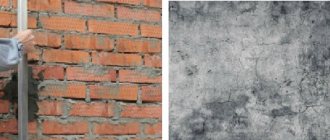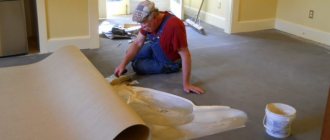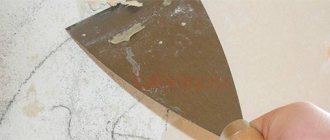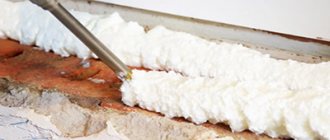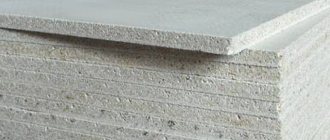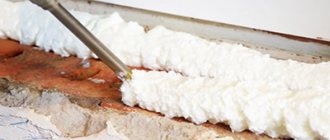In modern electrical engineering, mounting or installation boxes, also known as socket boxes, are widely used. The socket mechanism is fixed inside them when hidden wiring is laid. Most often they are produced round with a certain range of standard sizes. The diameter of the socket box is of great importance, on which the rigidity and reliability of the fastening inside the wall depends. This parameter is tied not only to the outlet, but also to the mounting hole where it will be installed.
What is a socket box: types and features
The socket consists of two parts: a visible decorative part and a socket box - a terminal block hidden from view, which serves as a connection point for various wires to ensure safe electrification. It is round and is produced in certain standard sizes in diameter and height, the compliance of which is verified by GOST standards and norms.
There are three types of socket boxes:
- for concrete, they are a plastic cup without fixing elements, installation is carried out in cement mortar;
- for wood - made of metal;
- for plasterboard, the body material is plastic, special vertical pressure plates, plastic or metal, are placed on the side walls; by means of these fixing elements, the socket box is attached to the back side of the gypsum board sheet.
The usual diameter of manufactured socket boxes is 68-70 mm, which requires the use of special drills for installation. As for the decorative part of the rosettes, it is also divided into subtypes:
- with a closing curtain to protect children from electric shock;
- with protection from moisture and other aggressive environments - suitable for installation in extreme rooms (kitchen, bathroom);
- equipped with a grounding contact.
Installation of a mounting box for a socket
Socket box dimensions: diameter, depth, center distance
An installation box for hidden installation, designed for mounting a socket in it, is called a socket box.
Most often, the socket box has a round shape (less often square) and a standard size. The main function of the socket box is to provide a rigid and reliable mounting location for the socket inside the wall, near the plane of its surface. If you need to install a socket box, then armed with quite ordinary tools (pencil, level, spatula, brush, hammer, chisel, drill with a crown, alabaster), you can do it yourself. Follow safety precautions, first turn off the electricity supply in the panel, use the tool carefully, remember the standards - and everything will work out.
Installation of a socket box
First, make markings regarding the wire going to the future outlet. Draw a horizontal line at a short distance from the wire - this is the level of the center of the future socket, then draw a vertical line - this will be the edge of the socket box (the wire will have to go from the top to the side), finally apply the socket box and outline it with a pencil - mark the place for drilling.
The standard diameter for drilling with a crown is 68 mm, and the depth will be approximately 45 mm; this should be taken into account when choosing a crown. In general, the attachment for a drill is called a “crown for a socket box (they are available for concrete, wood, etc.), so there will be no problem purchasing it. Drill according to the markings, if necessary, during the drilling process moisten the nozzle with water so that it does not overheat too much.
The socket box is fitted to the hole and the remaining drilled material is removed using a chisel and hammer.
If a single socket box is installed, then the transition lugs from its edges are cut off so that they do not interfere with installation in the mounting hole, but if there are several sockets nearby (a block of sockets), then the necessary lugs are left to fasten several socket boxes to each other.
If the socket fits easily into the mounting hole, everything is fine. The wire should easily fit into the diagonal hole of the socket box, which is located on the side near its back wall.
When the socket fits normally and is suitable in diameter and depth, the hole is moistened with water so that the alabaster adheres better, then the solution is mixed. The solution is prepared at a ratio of 4 to 1 - 4 parts alabaster to 1 part water. Apply the solution to the socket box from all sides in contact with the wall.
Carry out the installation, position the socket box strictly in the plane of the wall so that it does not stick out or go too deep, the edges of the socket box should be at the same distance from the edges of the mounting hole. The remnants of the alabaster solution are used to mask the wire going to the socket box.
Drilling walls for socket boxes in the video:
Installing a new socket in an old socket box
Sometimes, when carrying out repairs in multi-year-old houses, it turns out that the old metal socket box is much wider than necessary, the new socket dangles in it like in a bucket, the legs do not catch. In this case, you can put a new socket box directly inside the old box.
A hard, wide old box without a bottom will require the use of alabaster mortar, as is the case when installing a socket box in a wall. If the box firmly holds the new socket box, then it is simply screwed onto the old one with self-tapping screws, remembering that the wire must be inserted from the back side and not damaged by the screws.
Block of several socket boxes
If several socket boxes are placed in a row, then this is done by mounting a block of socket boxes. The crown is taken with a slightly larger diameter - more than 68 mm, up to 80 mm - the mounting holes will be combined with each other, and the interaxial distance will be at least 71 mm.
They make a horizontal marking relative to the wire that will have to go from the right, then they mark the wall for drilling mounting holes, taking into account the required center distance or along the already connected socket boxes - simply circle the block.
They drill holes, remove the excess with a chisel and hammer, remove the partitions, and run the wire horizontally. The margin in diameter will help to orient the block evenly. The transition lugs perform their function here - they combine the socket boxes into a block.
Installing a socket box in drywall
Universal socket boxes for drywall have special spacer lugs that make fixing easier, and alabaster is not needed with them. A hole is drilled with a crown to suit the size of the socket box, installation is carried out, fixation is carried out with a screwdriver - that’s all. When tightened with a screwdriver, the fastening lugs expand and hold well inside thin-walled surfaces such as drywall.
The universal socket box has a distance between the fixing tabs of about 83 mm, so if a switch or socket has a larger distance between the fasteners than usual, such devices will fit well. Also, universal socket boxes can, in principle, be screwed to wood or placed in concrete by simply removing the fixing tabs.
Which is better: heated floors or radiators?
Warm floorBatteries
Installation under plaster or tiles
If the wall will be plastered or tiled in the future, this must be taken into account when installing the socket box. Make a margin of about 7 mm for the protrusion (or as much as the covering will be) so that the plane of the future wall covering coincides with the edge of the installed socket box. Thus, the socket box must be left protruding.
In general, when installing a socket box in the wall in advance, it is important to take into account the fact that it is possible that the depth of the future socket (switch) and its diameter will differ from the geometric parameters of the socket box.
The wire in the socket box must have a reserve
Despite the seeming insignificance of this aspect, a prudent installer always takes into account the fact that it is likely that in the future, when replacing an outlet or switch, it will be necessary to strip the wire or shorten it slightly. If the wire turns out to be short, then it will have to be extended, and this will be associated with increased vulnerability of the connection; it will oxidize and break faster, and will spark.
The wire is taken with a margin of about 20 centimeters, carefully twisted into a spiral or smoothly (not steeply) bent, and thus compactly fits inside the socket box. This is done, of course, so that if in the future the owners decide to update the interior, they can easily update the sockets without unnecessary hassles and problems with extensions. How to extend a short wire if the wall, say, is covered with tiles or plaster? It's easier to leave a reserve in advance.
Share this article with your friends:
Join our groups on social networks:
Characteristics of crowns
For sockets, a special cylindrical drill (mill) is used with a cutting edge in the form of pointed teeth placed at a certain angle at the end. In the center of the device there is a drill around which the crown is placed. First, a drill penetrates the material being processed, fixes the nozzle in a given position and performs alignment for the cutting edge. This shape is optimal for efficient drilling and durability of the crown.
To install socket boxes, a crown is used, the diameter of which is 68 or 70, although the size range can vary from 33 to 150 mm. The length of the tool for installation work on installing an electrical terminal block is 60-65, although nozzles with a depth of 30 to 80 mm are available.
Crowns are divided into types:
- solid - consist of one thin-walled metal glass with teeth;
- collapsible - are a structure made of a universal disk on which several glasses of different diameters are placed in the shape of an unfinished cylinder.
Bimetallic cutters are also produced, which, in addition to processing fragile materials, are suitable for drilling metal and steel with sheet thicknesses of 1 mm or more. Popular manufacturers that produce 68 mm crowns include the brands Bocsh, HSS, Sigma, MTX, etc.
The Karat series cutter (Bosch) is used complete with an adapter and a centering drill, which allows you to process plasterboard walls, marble and wood. The HSS bit (Makitta) chambered for 13 mm is suitable for processing surfaces made of gypsum plasterboard, plastic, plywood for walls and chipboard. Allows you to make holes in the wall with a depth of 3.2 cm. Equipped with a countersink.
Crown 6.8 cm (collapsible)
Tungsten carbide
The main part is abrasive tungsten carbide coating . The chips on the edge of the cutter are so strong that they cope with such stubborn materials as ceramic tiles .
The ideal type of nozzle if you need to make a recess for a socket box in a tiled wall . You can work with brick and stone. The only disadvantage of the products is that the service life is much lower than that of a diamond crown.
You cannot drill through reinforced areas , as the cutting edge will become jagged and unusable .
Installation methods and types of tools for its implementation
There are three ways to install socket boxes:
- linked to a profile;
- without connection to the frame;
- installation of a socket block.
Before choosing the installation method, prepare the tools, in addition to the crowns and socket boxes, use a drill, a screwdriver and the outer part of the socket.
Additionally you will need:
- building level;
- ruler or tape measure (to control the distance between block socket boxes);
- pencil for marking;
- a construction vacuum cleaner, which is used when making holes with a drill in drywall, so that less dust collects and does not clog the lungs.
For precise marking, a laser level is used, which will allow you to carry out work with minimal deviations in calculations.
Type of marking made using a level
Pivot table
We looked at 4 types of crowns. It's time to sum it up. We present a summary table that shows the areas of application of cutters.
| № | Crown type | Concrete | Reinforced concrete | Ceramic tile | Drywall | Tree |
| 1 | Carbide | + | — | — | — | — |
| 2 | Diamond | + | + | + | — | — |
| 3 | Tungsten carbide | + | — | + | — | — |
| 4 | Bimetallic | — | — | — | + | + |
Standard crowns for socket boxes for concrete, plasterboard and wood differ in their characteristics. There is no universal option. But, using our recommendations, you can choose equipment with a decent ratio of cost and quality .
Good domestic crowns are the brands “ Zubr ” and “ Praktika ”. If you need something more reliable, you can purchase Messer , Bosh or Master Stayer .
Profile-linked installation
This type of installation is the simplest. It is used if there is a metal frame, and on sheets of plasterboard you can confidently determine where the profiles are located based on the marks left by the screw heads. There is no risk of snagging wiring or getting into the middle of the profile when making holes, which guarantees safe installation.
Stages of work:
- markings are carried out for the location of sockets (a horizontal and vertical line is drawn at the building level, the intersection of which indicates the location of the center of the future socket);
- a cutter with a diameter of 68 mm is put on the drill;
- a hole is made;
- take a socket box, break out the plug on the side walls for laying the power cable;
- a wire is threaded into the holes from the former plugs;
- the socket box is inserted into the plasterboard wall and secured to it with clamping paws using a screwdriver;
- wiring is connected in the terminal mounting block;
- During finishing work, the electricity is turned off and the hole is covered with masking tape;
- Upon completion of all work, the outer part of the socket is put on.
If the sheets of drywall are already plastered and it is impossible to visually determine where the metal profiles or conductive cable are located, they resort to using a conventional magnet, which they lean against the surface of the gypsum board and make the necessary notes. You can also cut holes on the gypsum board sheet even before the stage of covering the frame.
Layout of the mounting block for the socket in a sheet of plasterboard
Grouping rules
It is allowed to install several devices in the socket block; their number is almost unlimited, but usually more than 6–8 pieces are not installed . In addition to sockets, the block may contain switches, regulators, television and computer connectors.
Rules for grouping and carrying out work :
- The locations of socket boxes (not switches and regulators, but casings) are marked on the wall.
- To form recesses, crowns for a rosette with a diameter of 70 mm are used to give freedom to adjust the interaxial distances.
- The housings are adjusted by center and aligned vertically and horizontally.
- If you neglect the level, all the sockets in the block will stand askew (the way the boxes are mounted under them).
- Take into account the edge of the casing.
- As a standard, the side should be in the same plane as the wall - then the socket with the lid will fit tightly to the surface.
Valera
The voice of the construction guru
Ask a Question
After drilling the holes, a block is installed in them to check all parameters. The deviation of the sides of the block from the axis by 1.5 - 2 mm is allowed. Coordinate the possibility of entering all wires into the socket boxes so that they do not interfere with each other. Low-current and power connectors are separated from each other by a gap equal to another diameter of the socket. This way, electromagnetic waves will not interfere with the operation of devices.
Installation of a block socket
Block sockets are called sockets that consist of several terminal blocks for simultaneous connection to a 220 V network, the Internet, TV, etc.
Installation nuances:
- the distance between the centers of block sockets should be 72 mm;
- calculations are transferred to the wall using a level;
- The cups of the socket boxes are connected to each other by C3A3 cable or “butterflies”, which are taken with a margin of 2 cm and assembled into a block;
- under level control, circles are cut out of the plasterboard wall, to which the block is applied and the correct calculation of the recesses is checked;
- the resulting holes are connected to each other with a chisel;
- the block is inserted and fixed to the wall with clamping bolts;
- Cables are routed between the socket boxes.
Connecting a block socket
Installing socket boxes in drywall: tips for a novice master
The socket box for gypsum boards is an important element when installing electrical equipment into hollow walls, which is securely attached to the sheet and allows you to mount any electrical structures - switches, sockets, sensors or switchers. Important! When installing several socket boxes in one line, it is necessary to maintain a distance between their centers of 71 mm. When planning to mount a socket box in plasterboard, it is important to be able to choose it correctly. Of course, in any hardware store, consultants can help with the choice, but it is better if you yourself know what the differences are between socket boxes and how not to make a mistake with the purchase.” A glass for drywall differs from the rest in the presence of special fasteners installed on screws. These fasteners secure the socket box to the inside of the wall.
This is the only way “the glass can be securely fixed – neither with putty solution nor with cement. There are times when it is necessary to install 2 or 3 socket boxes in a row. In this case, you need to select “glasses with connecting tunnels through which the wire will be laid. If you only need to install one socket box, these connections can be cut, as they may interfere with installation in the recess in the drywall. There is a second option - you can purchase special connecting elements.
These partitions are installed in the glasses immediately before they are installed in the wall.
Additional Installation Requirements
To ensure that the installation of socket boxes is carried out in accordance with fire safety regulations, is distinguished by quality and accuracy, adhere to the following rules and recommendations:
- installation of electrical wiring must be completed before the start of the stage of covering the frame with gypsum board sheets; for these purposes, it is preferable to use a non-flammable flat cable of the VVGng LS type, which is placed in a corrugated sleeve with a self-extinguishing probe and secured with staples to the side shelves of the profile, the wiring should go to the location of the socket box;
- To prevent the material from cracking, when working with a crown, it is not recommended to press hard on the surface of the drywall sheet;
- installation of the socket box should be carried out 30 cm from the floor, before finishing work with gypsum boards begins;
- the dimensions of the recess between the original wall and the drywall must be 45 mm or more, otherwise the socket box will not fit through the hole made and will have to be further deepened;
- if there are wooden floors between the frame and the gypsum board wall or to increase the level of electrical safety, it is recommended to treat the edges of the installed socket box with gypsum plaster.
Sealing a socket with gypsum plaster
You can find out how to install a socket using a bimetallic crown, the diameter of which is 68 mm, in compliance with installation standards, using the example video below.
Diamond
The active element of diamond crowns is a coating of natural mineral, which has no equal in hardness. Strong segments are laser welded on the edge of the cutter. They quickly cut concrete using fine diamond chips generated during operation.
Types of marking: M - only ordinary concrete, C - reinforced, T - high-quality.
The equipment is suitable for reinforced sections of walls, as it can easily handle metal. The cutter penetrates to any depth, leaves smooth holes and creates a minimum of noise.
Diamond bits are not designed to work in impact and combined modes. Set the rotary hammer switch to “ drilling only .
Installation without reference to a profile
Sometimes it happens that the calculations are made incorrectly and after drilling in the hole for future sockets, a profile is visible, due to which it is impossible to push the block through and securely fix it in the recess. In this case, the crown is replaced with an ordinary metal knife or chisel and the holes are made manually, removing 5-10 cm of the visible profile.
Incorrect installation, in which the profile prevents the placement of the socket box in the prepared hole.
The frame of the structure will not suffer from this, but the sheet of drywall itself may be deformed, and due to the inconvenient viewing angle there is a risk of injury. When cutting the profile, it is recommended to wear special installation gloves - they will protect your hands from unwanted cuts.
Carbide
The cutting part of carbide bits is brazed from an alloy called “win” ( 90 % tungsten and 10 % cobalt). The main advantage is low cost, and the main disadvantage is the short service life. Such cutters are very vulnerable and must be treated with care.
This is the right choice if you need to make 1 - 10 holes for socket boxes in concrete or brick walls. The products are not suitable for large volumes.
When it comes into contact with reinforcement, strong teeth are broken out of the “blank”, especially in products made in Asia. Therefore, you should avoid reinforced areas .
How to choose the right one
Before purchasing this or that model, you need to decide on some features. Firstly, in which wall you plan to install it:
- Solid walls (concrete, brick, gas, foam blocks). For such floors, the most ordinary concrete socket box is suitable, without any additions.
- Hollow walls (plasterboard, chipboard, plywood, etc.). They will require socket boxes with special clamping claws.
There are also universal models that, if necessary, can be used for any walls.
Secondly, you need to calculate how many sockets will need to be installed at one point. In addition to single socket boxes, you can buy double, triple, etc.
Third, choose the desired shape and size. The standard shape is round, but square ones are also available. You need to know the following about sizes:
- Diameter of the outer part. There are 60 and 68 mm.
- Installation depth. There are also two types - 40 and 45 mm.
The most popular dimensions are 68x45. They accommodate most manufactured sockets and switches.
Preparing the walls
Many people have begun to finish these surfaces with plasterboard en masse, since in this case it is possible to significantly speed up repair work, as well as make them even without the use of bulk materials, which, in case of significant defects in the walls in old buildings, will require the use of a significant amount.
You can install plasterboard sheets on a profile that is 5 cm wide, leaving sufficient space for further placement of insulation, sound insulation and wires. When carrying out this work, there is also a need to install socket boxes.
Note! If you have little understanding of electrical engineering, it is best to resort to the services of specialists who can install electrical cables efficiently, since mistakes made during independent installation may in the future cause a short circuit that can lead to a fire. It is advisable to purchase socket boxes together with drywall, since in this case it will be possible to save a significant amount of time by selecting suitable mounting boxes
It is advisable to purchase socket boxes together with drywall, since in this case it will be possible to save a significant amount of time by selecting suitable mounting boxes.
Ordinary plasterboard sheets easily ignite in a fire. The only exception is fire-resistant material, which is mostly pink or red in color and has special markings.
For this reason, when purchasing socket boxes, you also need to pay attention to their fire safety standards
Important! When choosing sockets for installation in plasterboard structures, it is necessary to consider only those products whose rim is made of metal, which, if the voltage is too high, will ensure the passage of current through itself and tripping of the fuse protection in the panel. In addition, there will be a power outage, which will eliminate the possibility of possible negative consequences
In order to still carry out high-quality installation of the socket box in plasterboard, it is necessary to prepare the walls properly:
- First of all, it is recommended to apply putty, thanks to which the surface becomes more durable and begins to hold its shape well during drilling.
- Next, after the putty composition has hardened, it is necessary to carefully open the material with a primer. After the applied mixture is absorbed, the drywall will stop crumbling during further processing.
Having completed these steps, you can begin to determine the future locations of the mounting boxes.
What to look for when purchasing
To select a socket box, the following factors are taken into account:
- Material. Due to the fact that the fastening technology involves built-in installation, the product should not melt or ignite when heated. Electrical wiring is prone to fire, especially at joints, so it is better to give preference not to cheap plastic parts, but to products made of propylene or other non-flammable materials.
- Correct form. Low-quality products may have distortions and displacements of the walls, which does not allow the socket to be correctly inserted into the box.
- Movement of the propellers. To securely attach the installation module to the drywall, the self-tapping screws must attract the tabs well, preventing slipping or twisting.
- Availability of quick-removable plugs. A ready-made hole for the cable eliminates the need to form it yourself.
- The ratio of the sizes of the box and the socket box. To supply all the parts without complex adjustments, it is better to give preference to one manufacturer.
- Possibility of using a connector. This part allows you to quickly create a double or triple block by joining single boxes.
Among the variety of socket boxes for drywall, round models are considered the most functional, since most of them have special connectors that allow you to assemble blocks of unlimited sizes.
High-quality products must have the necessary safety and compliance certificates.

